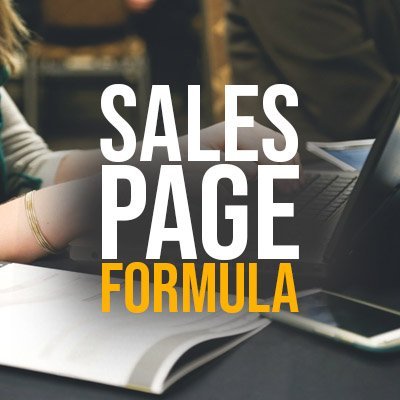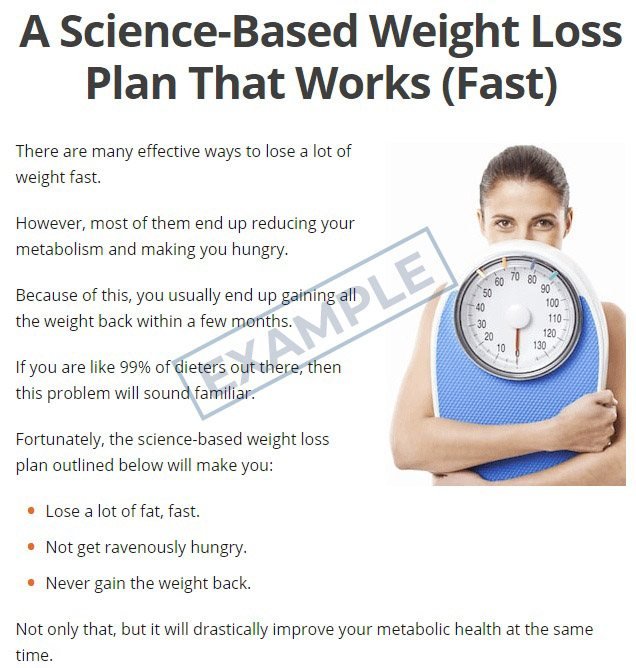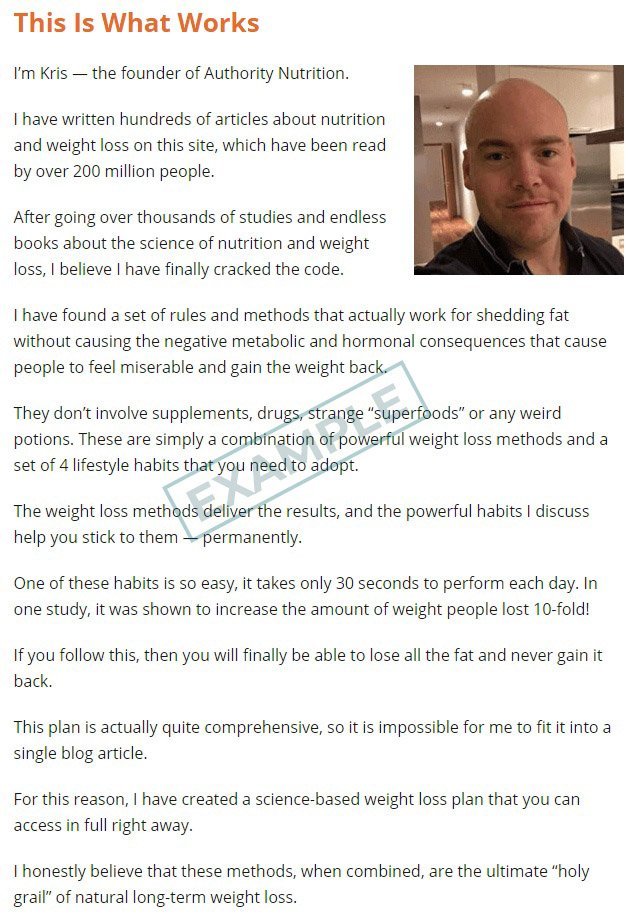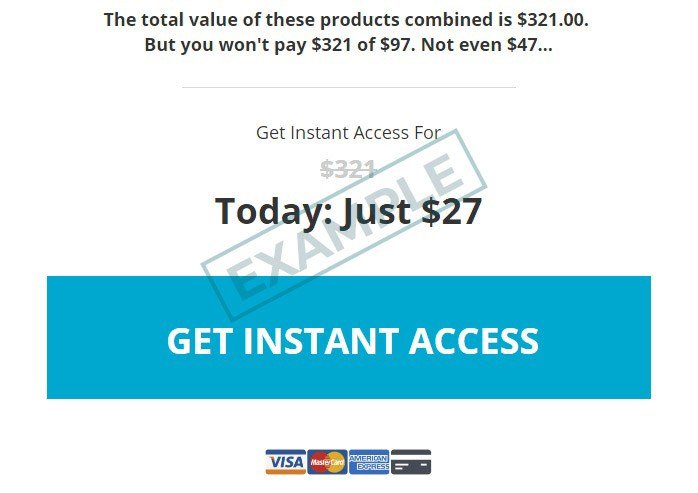Not having the Sales Conversion that you deserve? Then, you need to read this! I’m going to share with you 6 steps to write a sales page that will turn “No or Maybe” into “Yes, take my money!”
The sales page you are about to write will:
- Connect and build trust with your audience;
- Remove any rejections that your audience may face; and most importantly
- “SELL“.

Your sales page is one of essential pages that may make or break your business.
I’ve seen too many businesses being crushed by their competitors because of their poor sales page.
I don’t wish that to happen to you.
So, I’ve created this simple guide for you to write a Sales Page that Sells.
Believe it or not, there is a formula to it.
The following elements need to be in the exact sequence for the sales page to be effective.
So, here goes…
Step 1: Addressing The Problem
This element must be at the top of the page and requires a deep understanding of your buyers.
Every potential buyer that visits your Sales Page has a problem they wish to solve.
It touches on the pain points and the headaches of your buyers.
This is the best section of your Sales Page to grab the attention of your buyers, connect with them, and make them intrigued.
In the buyer’s perspective, if you can demonstrate that you understand them deeply…
They will give you their undivided attention.
Here is a good example of “Addressing the Problem”.
Imagine yourself as someone who’ve tried losing weight but failed, and you’ve chanced upon this:

What do you think? Do you already feel connected?
Does it make you want to know more about the “Science-based weight loss Plan”?
Understanding Your Customers
To write something like the example above, you need to dig deep to understand your buyers.
Basically, you need to walk in your buyer’s shoes.
Here’s a simple guide for you to understand your buyers intimately.
The headline of this section plays an important role as well to draw the attention of your buyer.
A good headline grabs the attention of your buyers and draws them to the body content of your Sales Page.
It takes approximate 5 seconds for a person to determine if they want to read the rest of your Sales Page.
So, writing a great headline for your Sales Page is pretty important, don’t you agree?
Step 2: Magnify The Problem
Instead of telling your buyers that they need to buy your product now.
Tell them “WHY”, not listening to you or your advice will hurt them.
This will implant a message in your buyer’s mind that they should trust you and act now.
It will allow you to solidify the trust that you have built with your buyers.
Then, share with them why your product works (benefits) without telling them what exactly it is.
You can also share the transformational benefits of your product by showing them how the product can turn your buyer from where they are now, to where they want to be.
This section will give you:
- A more profound connection with your buyers by telling them why they should trust you; and
- Builds a bridge for you to lay out your Sales Offer in the subsequent sections.
Here’s a good example:

Notice how the author of the above example instils trust to his buyers by telling them the:
- Truth about the “Diet and Fitness” industry;
- Reason why so many people have trusted him; and
- A hint that his product works.
Step 3: Tell Your Story
Every step of your Sales Page points to one crucial ingredient, “TRUST“.
Trust is the most critical ingredient when writing a sales page that sells.
And, this section will show your buyer who they are talking to, “YOU”, the author of the Sales Page.
Nobody likes a corporate sales message because they are too “Salesy”.
People like to relate to another person who has been through or are currently in their situation.
When you show potential customers that you’ve been through their situation…
Your buyers will be interested in your story and your solution.
It is a great way to build rapport with your buyers.
There is no hard and fast rule for writing your story.
You may have been through your buyer’s situation, or maybe you’ve not, but the primary purpose of this section is to build trust, connection, and rapport with your buyers.
Here are two good examples. The first is from an individual who has been in the buyer’s shoes.
The second example builds trust by sharing personal research.
Both are positive examples, but I personally prefer the first example. What about you?:
Example #1:

Example #2:

Step 4: Include Testimonials
Authentic testimonials are so important to your Sales Page.
They can switch your prospects into the “buying mode” almost instantly without even seeing what your offer is.
Instead of just hearing your side of the story…
Your buyer will trust your product, even more, when they see that many others have benefited from your product.
According to Brightlocal, 88% of people trust online reviews written by other consumers as much as they trust recommendations from personal contacts.
It gives your buyers a third eye view of the quality of your product(s).
Believe it or not, emotion plays a massive role in the buying decision.
And, with positive testimonials, it satisfies the emotional connection between your buyer and your product.
Here are some examples of highly effective testimonials:
Example #1:

Example #2:

Don’t start going to places like Fiverr.com to buy your testimonials; it will kill your business in the long run.
Don’t forget, you are building trust with your buyer, and if you are buying testimonials…
You are lying to your buyers, and they will not trust you.
I am sure that your product, or the product that you are promoting, has transformed the lives of other people.
Reach out to those people who have benefited from the product and ask for genuine testimonials.
Step 5: The Offer
I’ve shared in two separate articles about a methodological way to craft a compelling sales offer.
To craft a compelling sales offer, the first step is to understand and select the different type(s) of sales offer.
And, the second step is to understand what your buyers want.
This section will:
- Summarize all of the above sections;
- Present the product; and
- Share the features and benefits of the product.
You can also put in some bonuses to entice your buyers.
Believe me. Bonuses enhance your Sales Offer.
They make your buyer believe they are getting more than what they will be paying for.
Most often, your buyers will buy your product if your bonus(es) is(are) enticing enough.
Here’s a superb example of a great sales offer:

Step 6: The Call-To-Action
Basically, all the above elements lead to this final moment, “To Buy” or “Not to Buy”.
If all of the above elements and the pre-frame process is done correctly…
You can quickly achieve a 10% to 25% sales conversion rate.
It means that out of 100 people who visited your Sales Page, between 10 to 25 people will buy your product.
That is quite an impressive sales conversion rate!
Honestly, a lot of people have been testing the color scheme and the words used in the Call-to-action button.
And, they always claim that changing different colors or different wordings of the button will make a huge difference to their conversion rate.
To me, that’s bullsh*t.
The conversion rate will depend solely on how well the body copy of the Sales Page is crafted. It doesn’t depend on the “Button” itself.

What happens when Your Prospects are NOT READY to Buy?
There may be times that your buyers are convinced of your products, but they are just not ready to buy it now.
For this situation, do not just let your potential buyer leave your website, because they may never return.
Trust me; this happens all the time.
When your potential buyer doesn’t want to buy now, it doesn’t mean that they will not buy in the future.
Some people just need more time to consider.
But most of the time, they will forget about the offer, or how to find your website again.
To solve this problem, you should build a secondary sales funnel to capture their contact information.
Then, you can put them into an email sequence.
In the email sequence, you should:
- Shares useful content regularly;
- Remind them that your product exists;
- Motivate them to buy your product.
Regular follow up through email will allow you to build great rapport with your buyers, and instil brand identity.
So, there you have it, the 6 steps you need to write a sales page that sells.
Conclusion
The primary purpose of a Sales Page is to build trust and rapport with your potential buyer and get them to act now!
People often make emotional decisions instead of a rational one.
And, they justify their decision after the purchase.
The emotional factor, “TRUST“, is the most crucial ingredient in your Sales Page.
Bottom line is…
If you can build TRUST with your potential buyer, they will most likely buy your product.
The 6 elements of a Sales Page that I’ve shared with you above, needs to be placed in the proper sequence:
- Addressing the Problem
- Magnify the Problem
- Tell Your Story
- Include Testimonials
- The Offer
- The Call-To-Action
It may not be as effective if you jumble the above formula.
You can add other elements to the above formula as long as it makes sense, and if it enhances your TRUST building process.
If you thought of any elements that I have not covered above…
Feel free to drop me a comment below; I’ll be most happy to discuss it with you.
Thank you for taking the time to read this article.
If you find this article helpful, please help to share it.
Talk to you soon!
